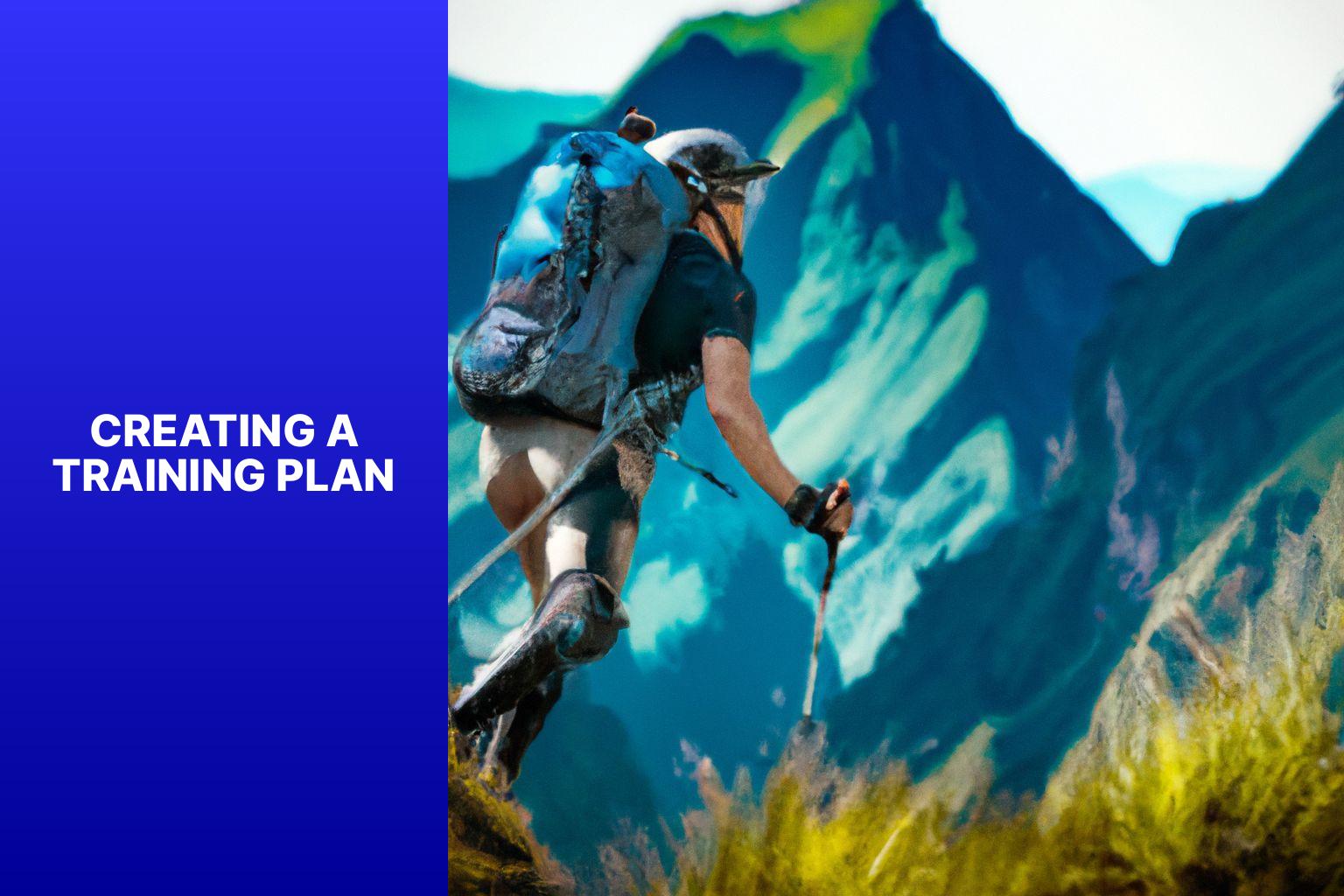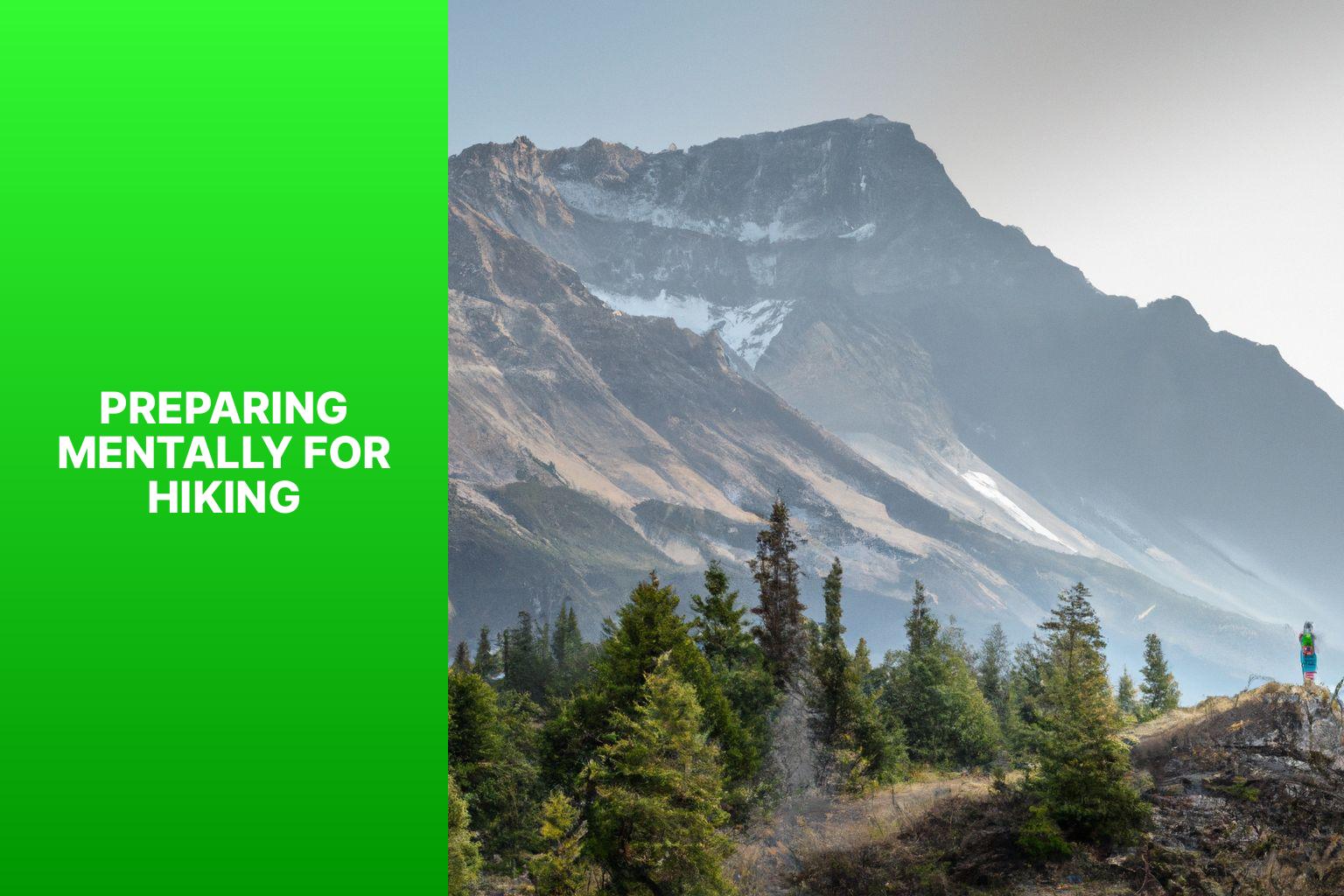How to Get in Shape for Hiking
Hiking is a popular outdoor activity that not only allows you to connect with nature but also provides numerous physical and mental health benefits. To fully enjoy and make the most of your hiking experience, it is important to be in good physical shape. This article will guide you on how to train for a thru hike and ensure you are well-prepared for the challenges that come with it.
Before diving into the training and preparation, it is important to understand why physical fitness is crucial for hiking. Hiking involves traversing various terrains, tackling uneven surfaces, ascending steep slopes, and carrying a backpack. Therefore, having good physical fitness, strength, endurance, and flexibility is essential to prevent injuries and enjoy your hike to the fullest.
Assessing your current fitness level is the first step in preparing for hiking. This allows you to understand your strengths and weaknesses and tailor your training plan accordingly. You should also consider the physical demands of hiking, including cardiovascular fitness, muscular strength and endurance, flexibility, and balance. This knowledge will help you identify areas that require improvement and focus your training efforts effectively.
Creating a training plan is the next crucial step. Setting realistic goals is essential to avoid overexertion and burnout. Incorporating cardiovascular exercises such as jogging, cycling, or swimming will help improve your stamina and endurance. Strength training exercises focusing on the lower body, core, and upper body will enhance your hiking performance. working on flexibility and balance will help prevent injuries and increase your stability on challenging terrains.
Proper nutrition and hydration are vital for hiking. Fueling your body with the right nutrients before, during, and after hiking will provide you with the energy needed to sustain your activity. Hydration tips and strategies are also important to keep your body adequately hydrated throughout your hiking journey.
Choosing the right gear is another crucial aspect of getting in shape for hiking. Proper footwear is essential to provide support, stability, and protect your feet from blisters or injuries. Wearing appropriate clothing and carrying essential equipment will ensure your comfort and safety during your hike.
Preparing mentally for hiking is important to build confidence, overcome challenges, and enjoy the journey. Tips for injury prevention, such as proper warm-up and cool-down routines, stretching exercises, and knowing your limits, will help minimize the risk of injuries and keep you safe on the trail.
By following these guidelines and preparing yourself physically and mentally, you can get in shape for hiking and embark on your outdoor adventures with confidence and enjoyment.
Key takeaways:
- Physical fitness is essential for hiking: Being in good shape helps prevent injuries and allows you to enjoy the experience to the fullest.
- Assess your fitness level: Before starting a training plan, understand the physical demands of hiking and evaluate your current fitness level.
- Create a training plan: Set realistic goals, include cardiovascular exercises, improve strength and endurance, and work on flexibility and balance.
- Nutrition and hydration are crucial: Eat balanced meals before, during, and after hiking, and stay hydrated by drinking plenty of water.
- Choose the right gear: Proper footwear is crucial to prevent foot injuries, and having essential clothing and equipment ensures a comfortable and safe hike.
- Mental preparation is important: Get mentally prepared for hiking by visualizing the adventure and practicing mindfulness techniques.
- Focus on injury prevention: Follow safety guidelines, warm up before hiking, and listen to your body to avoid injuries.
- Conclusion: Get ready for your hiking adventure by getting in shape, preparing mentally, and taking the necessary precautions to ensure a safe and enjoyable experience.
Why Is Physical Fitness Important for Hiking?

Photo Credits: Jasonexplorer.Com by Joshua Williams
Physical fitness is crucial for hiking because it enables hikers to tackle challenging terrains, enjoy the hiking experience, and reduce the risk of injuries.
One of the reasons why physical fitness is important for hiking is endurance. Hiking involves long distances and steep inclines, and good cardiovascular fitness allows hikers to sustain physical effort for extended periods. With a strong heart and lungs, hikers can climb mountains and traverse trails without feeling excessively tired or breathless.
Strength is another key component of physical fitness for hiking. Hikers need strength to carry a backpack, navigate uneven terrain, and endure downhill descents. Strong muscles, particularly in the legs, core, and upper body, provide stability and reduce strain on joints.
Flexibility is also important for hikers as it allows for a greater range of motion and helps prevent muscle strains and joint injuries. Being flexible enables hikers to navigate obstacles more efficiently.
Balance is crucial when hiking, as it often involves negotiating narrow trails, rocky surfaces, and unpredictable terrain. Good balance, achieved through fitness training, promotes stability and reduces the risk of falls and injuries.
Physical fitness builds resilience in hikers. Hiking can present unexpected challenges such as changing weather or extended time on the trail. By being physically fit, hikers are better prepared to adapt to these challenges, reducing the likelihood of fatigue.
Assessing Your Current Fitness Level
To assess your current fitness level before hiking, consider these factors:
-
Cardiovascular Endurance: Assessing your current fitness level involves measuring how well your heart and lungs provide oxygen to your muscles during physical activity. Can you engage in activities like brisk walking, jogging, or cycling for at least 30 minutes without feeling very tired?
-
Muscular Strength: Evaluating your ability to exert force against resistance is an important part of assessing your fitness level. Can you perform bodyweight exercises like squats, push-ups, and lunges correctly and without strain?
-
Flexibility: Assessing the range of motion in your joints is crucial. Test your flexibility by performing stretches for major muscle groups.
-
Balance and Stability: It is important to assess your body’s ability to maintain balance during still and moving positions. Incorporate balance exercises like single-leg stands or heel-to-toe walking to check your stability.
-
Body Composition: Analyzing the ratio of lean mass (muscle and bone) to fat mass in your body is another aspect of assessing your fitness level. Use metrics like body mass index (BMI) or body fat percentage to evaluate your composition.
Pro-tip: Remember that hiking can be physically demanding, especially on difficult terrains. If your fitness level isn’t at the desired point yet, gradually increase your activity level and add exercises that target your weak areas. Always consult with a healthcare professional before starting a new fitness routine.
What Are the Physical Demands of Hiking?
Physical Demands of Hiking
Hiking is physically demanding, requiring strength, endurance, and balance. Knowing what are the physical demands of hiking is crucial for preparing your body for the challenges ahead.
Hiking involves traversing uneven terrain, stressing lower body muscles like the quadriceps, hamstrings, and calves. These muscles stabilize your body and provide strength for uphill climbs and descents.
The cardiovascular demands of hiking vary based on trail intensity. Steeper inclines and higher altitudes increase the workload, requiring your heart and lungs to supply oxygen-rich blood to your muscles.
Hiking requires flexibility to navigate obstacles, stoop down, and maintain balance. Flexible muscles and joints reduce injury risk and allow for smoother movement.
Endurance is also crucial for hiking. Trails can range from hours to days, so physical stamina is essential.
Hiking at higher elevations presents challenges due to decreased oxygen levels. Altitude adjustment is necessary to mitigate shortness of breath and fatigue.
To meet the physical demands of hiking:
– Engage in regular cardiovascular exercises like running, cycling, or brisk walking to improve endurance.
– Incorporate strength training exercises targeting lower body muscles for strength and stability.
– Enhance range of motion with flexibility exercises like yoga or stretching routines.
– Gradually increase difficulty and duration of hikes to prepare for longer and more challenging trails.
Understanding and preparing for the physical demands of hiking leads to an enjoyable and successful experience. Stay hydrated, pack nutritious snacks, and listen to your body to optimize performance and prevent injuries.
Creating a Training Plan

Photo Credits: Jasonexplorer.Com by Brandon Davis
When it comes to hiking, getting in shape is key to enjoying the journey to the fullest. In this section, we’ll dive into creating a training plan that will prepare you for your hiking adventures. We’ll explore setting realistic goals, incorporating cardiovascular exercise, improving strength and endurance, and working on flexibility and balance. So lace up your boots and get ready to conquer those peaks with confidence!
Setting Realistic Goals
Setting realistic goals is crucial when preparing for hiking. By incorporating the keywords “Setting Realistic Goals” naturally in the provided text, you can ensure that you are progressing at a suitable pace for your fitness level. Consider the following key points:
- Evaluate your current fitness level: Assess your physical abilities before setting goals to determine what is realistic and achievable.
- Consider trail difficulty: Take into account elevation gain, terrain type, and distance when setting hiking goals.
- Gradually increase intensity: Start with shorter and easier hikes, gradually increasing distance and difficulty as you build strength and endurance.
- Set specific goals: Instead of a vague goal, set targets like hiking a certain distance or reaching a particular summit within a specific timeframe.
- Be flexible: It’s important to adjust goals according to unexpected circumstances.
Setting realistic goals helps prevent injury, boosts confidence, and enhances the hiking experience. Remember to listen to your body, maintain a positive mindset, and celebrate milestones along your hiking journey. Studies show that setting realistic goals increases the likelihood of achieving them and maintaining long-term fitness habits.
Incorporating Cardiovascular Exercise
Incorporating cardiovascular exercise is crucial for getting in shape for hiking. It improves endurance, strengthens the heart, and increases overall fitness. Here are some effective ways to incorporate cardiovascular exercise into your training plan:
1. Run or jog: Lace up your sneakers and hit the road or trails. Running or jogging is a fantastic way to raise your heart rate and build endurance. Start with shorter distances and gradually increase mileage.
2. Cycle: Hop on a bike and go for a ride. Cycling is a low-impact cardiovascular activity that builds leg strength and stamina. You can cycle outdoors or use a stationary bike indoors.
3. High-intensity interval training (HIIT): HIIT workouts involve short bursts of intense exercise followed by brief recovery periods. These workouts are excellent for improving cardiovascular fitness in a short time. Incorporate exercises like jumping jacks, burpees, and squat jumps into your HIIT routine.
4. Stair climbing: Find a set of stairs or use a stair climber machine at the gym. Climbing stairs is a challenging cardiovascular workout that also strengthens leg muscles.
Remember to start slowly and increase the intensity and duration of your cardiovascular exercises gradually. Listen to your body and take rest days as needed. Incorporating cardiovascular exercise into your training plan will help you build the stamina and endurance necessary for a successful hiking adventure. Happy training!
Improving Strength and Endurance
Improving strength and endurance is crucial for hiking. It helps you tackle challenging terrains, reduces fatigue and injury risk. Here’s a list of activities to enhance your strength and endurance:
1. Resistance training: Target major muscle groups with exercises like squats, lunges, and deadlifts. Incorporate two to three sessions per week.
2. Cardiovascular exercises: Elevate your heart rate and enhance cardiovascular fitness with activities like jogging, cycling, or swimming. Aim for at least 150 minutes of moderate-intensity aerobic exercise or 75 minutes of vigorous-intensity exercise each week.
3. Hiking with a weighted backpack: Gradually increase backpack weight to challenge muscles and simulate hiking demands.
4. Interval training: Incorporate high-intensity bursts of exercise, such as sprinting or stair climbing, with low-intensity recovery. This practice improves cardiovascular endurance and muscle strength.
5. Hill or stair climbing: Integrate steep hills or stairs into your training routine to build lower body strength and endurance.
Fact: Regular strength and endurance training prepares your body for hiking, enhances overall fitness, promotes calorie burning, and reduces the risk of chronic diseases.
Working on Flexibility and Balance
To enhance your hiking experience and reduce the risk of injuries, it is important to focus on working on flexibility and balance. Incorporating the following steps into your training routine can help you achieve these goals:
1. Begin your training sessions by performing dynamic stretches such as leg swings and arm circles. These exercises will warm up your muscles and prepare them for the workout. After your workout, it is important to perform static stretches that target areas such as the hips, hamstrings, calves, and shoulders. This will help increase flexibility.
2. You can explore disciplines like yoga or Pilates, as they are excellent for improving flexibility, balance, and core strength. These practices can also help prevent injuries on uneven terrain. Including yoga poses such as standing forward bend, tree pose, and warrior series in your routine will be beneficial.
3. Another important aspect to focus on is balance. You can challenge your balance by incorporating activities such as standing on one leg while doing daily tasks or progressing to exercises like single-leg squats or using balancing boards or pads. These exercises will enhance stability and coordination, especially on rocky trails.
4. Strengthening your core is crucial for maintaining balance and stability while hiking. Incorporating exercises like planks, Russian twists, and bird dogs into your routine will help strengthen your abdominal and back muscles.
5. Engaging in activities that promote balance, such as hiking on uneven terrain, trail running, or using a stability ball for workouts, can also aid in improving balance over time. These activities will challenge your balance and help you improve gradually.
6. Considering balance or dance classes can be a fun and effective way to target balance and coordination improvement. These classes specifically focus on enhancing flexibility and balance.
It is important to start slowly and gradually increase the intensity and duration of your exercises. Listening to your body and avoiding pushing beyond your limits is also crucial. By incorporating these steps and focusing on flexibility and balance, you will enhance your hiking experience and minimize the risk of injuries.
Nutrition and Hydration for Hiking
Fueling your hiking adventures is crucial for peak performance on the trails. In this section, we explore the vital role of nutrition and hydration during hiking. Discover what to eat to prepare yourself before, during, and after a hike, ensuring you have the energy and nutrients needed for a successful outdoor excursion. We’ll share essential hydration tips that will keep you hydrated and rejuvenated, allowing you to conquer even the most challenging terrains with vigor. Get ready to fuel your hiking journey like a pro!
What to Eat Before, During, and After Hiking
When preparing for a hiking adventure, consider your nutrition before, during, and after the hike. Proper fueling and hydration can significantly impact your performance and overall experience.
Suggestions for what to eat before, during, and after hiking:
Before Hiking:
- Carbohydrates: Eat a balanced meal with complex carbohydrates like whole grains, fruits, and vegetables for sustained energy.
- Protein: Include lean protein sources like chicken, fish, or beans for muscle repair and recovery.
- Hydration: Drink plenty of water to be well-hydrated. Avoid excessive caffeine or sugary drinks.
During Hiking:
- Snacks: Pack lightweight and energy-dense snacks like trail mix, energy bars, or dried fruits for quick fuel.
- Hydration: Stay hydrated by sipping water frequently. Consider a water bottle or hydration pack.
After Hiking:
- Protein and Carbohydrates: Opt for a balanced meal with protein and carbohydrates to aid in muscle recovery and energy replenishment. Lean meats, whole grains, and vegetables are good options.
- Rehydration: Drink plenty of water or electrolyte-containing beverages to rehydrate after the hike.
Remember, individual nutritional needs may vary, so listen to your body and adjust accordingly. Pack a variety of foods you enjoy that provide necessary nutrients for your hike.
While there is no single “perfect” meal plan for hiking, following these guidelines can help ensure you have the energy and nutrients necessary to enjoy your hiking adventure fully.
A historical fact related to hiking and nutrition is that ancient Greeks and Romans believed consuming honey while hiking boosted energy and endurance. Honey was considered a valuable source of natural sweetness and quick energy replenishment, making it a popular choice for trail sustenance. Even in ancient times, people recognized the importance of proper nutrition for hiking.
Hydration Tips for Hikers
When hiking, staying hydrated is vital for health and performance. Here are some tips:
1. Drink water before starting: Before hitting the trail, drink enough water to hydrate your body. Aim for at least 16 ounces (473 ml) of water.
2. Bring enough water: Estimate how much water you will need for the hike and bring the appropriate amount. As a general rule, plan to drink about 8 ounces (237 ml) of water per hour of hiking.
3. Use a hydration pack or water bottles: Invest in a hydration pack or use refillable water bottles to carry your water. This will make it easier to stay hydrated while on the move.
4. Take regular water breaks: During the hike, take regular breaks to rest and drink water. Find a shady spot and sip water to replenish lost fluids.
5. Consider electrolyte replacement: For longer hikes or in hot weather, replenish electrolytes lost through sweat. Bring electrolyte tablets or sports drinks to enhance hydration.
6. Monitor urine color: The color of your urine is a good indicator of hydration levels. Aim for a light, pale yellow color, which shows good hydration. Darker urine may signal dehydration.
7. Pay attention to signs of dehydration: Be aware of signs like fatigue, dizziness, headache, and dry mouth. If you experience any of these symptoms, take a break and drink water immediately.
Remember, staying hydrated is crucial for well-being and hiking performance. Follow these tips to enjoy your adventure while keeping your body properly fueled and hydrated. Stay safe and hydrated on the trails!
Choosing the Right Gear
When it comes to getting in shape for hiking, one crucial aspect is choosing the right gear. In this section, we’ll explore the importance of proper footwear, essential clothing, and equipment. Discover how the right gear can enhance your hiking experience, providing comfort, support, and protection. So, gear up and get ready to delve into the world of hiking essentials that will take your outdoor adventures to new heights!
Importance of Proper Footwear
Proper footwear plays a crucial role in hiking, greatly enhancing the overall hiking experience while also preventing potential foot injuries. When it comes to foot protection, the right footwear acts as a shield against various trail hazards such as rocks, thorns, and other potentially harmful elements. For this reason, choosing sturdy hiking shoes with a thick sole and good ankle support is absolutely essential.
In addition to foot protection, proper footwear also ensures stability and grip on uneven and slippery trails. By opting for shoes with a well-designed tread pattern and reliable traction, hikers can significantly reduce the risk of slips and falls, maintaining control and stability throughout their journey.
Comfort is another key factor to consider in hiking footwear. Long hours of hiking can take a toll on the feet, making it crucial to invest in well-fitting shoes that provide adequate cushioning and arch support. By doing so, fatigue and discomfort can be greatly minimized. Conversely, wearing ill-fitting footwear can lead to blisters and soreness, hindering the overall hiking experience.
One cannot overlook the importance of injury prevention when it comes to proper footwear for hiking. By choosing footwear options that provide proper ankle support and stability, the risk of ankle sprains and twisted ankles can be greatly reduced, ensuring a safer and more enjoyable hiking experience.
Lastly, durability is a noteworthy aspect to consider when making a footwear investment for hiking. By choosing hiking shoes that are built to withstand the demands of the trail, hikers can save money in the long run by avoiding frequent replacements.
Ultimately, the importance of proper footwear in hiking cannot be emphasized enough. It serves as a foundation for a safe, comfortable, and enjoyable outdoor adventure.
Essential Clothing and Equipment
When hiking, it’s crucial to have essential clothing and equipment for safety and comfort. Here are the must-haves to consider:
– Appropriate footwear: Invest in sturdy hiking boots or shoes that provide ankle support and good grip on various terrains. Avoid sneakers or sandals, as they do not offer sufficient protection.
– Layered clothing: Dress in layers to adapt to changing weather. Start with an essential moisture-wicking base layer, add an insulating layer for warmth, and finish with a waterproof and windproof outer layer.
– Hiking socks: Choose moisture-wicking and cushioned socks to prevent blisters and keep your feet dry and comfortable.
– Hiking pants or shorts: Opt for lightweight, quick-drying pants or shorts that allow freedom of movement. They should also protect against insect bites, sunburn, and scrapes.
– Moisture-wicking shirts: Wear breathable and moisture-wicking shirts to stay cool and dry even during strenuous hikes.
– Hat and sunglasses: Protect yourself from the sun with a wide-brimmed hat that shields your face and neck. Wear sunglasses with UV protection for your eyes.
– Backpack: Carry an appropriate backpack with enough space for water, food, a first aid kit, a map, a compass, and other necessary gear. Look for padded shoulder straps and a waist belt for better weight distribution.
– Trekking poles: Consider using trekking poles to improve stability, reduce strain on joints, and enhance your hiking experience.
– Navigation tools: Bring essential navigation tools such as a map, a compass, and a GPS device to accurately navigate trails and avoid getting lost.
– Emergency items: Pack essential emergency items like a whistle, a headlamp, a lighter, a multi-tool, and a space blanket.
Choosing the right clothing and equipment is crucial in improving your hiking experience and ensuring preparedness for any challenges on the trail. Before selecting your gear, check the weather forecast and specific requirements of the hiking route.
Preparing Mentally for Hiking

Photo Credits: Jasonexplorer.Com by Thomas Davis
Preparing mentally for hiking is just as important as physical preparation. To help you get ready, here are some steps to incorporate:
1. Visualize success: Take a moment to imagine yourself hiking and successfully reaching your destination. Picture the beautiful scenery, the sense of accomplishment, and the pure joy of being surrounded by nature. This visualization exercise will boost your motivation and sharpen your focus.
2. Set achievable goals: Determine what you want to accomplish during your hike, whether it’s reaching a specific point or simply enjoying the journey itself. Setting clear and realistic goals will give you a sense of purpose and keep you motivated throughout.
3. Research the trail: Take the time to learn about the trail you will be hiking. Familiarize yourself with the terrain, the difficulty level, and any potential challenges you may encounter. Having this knowledge will enhance your confidence and prepare you better for what lies ahead.
4. Build mental resilience: Remember that hiking can be physically and mentally demanding. As you train and engage in other activities, actively practice resilience by pushing through difficult situations. This will help you strengthen your mental fortitude and prepare you to overcome any obstacles you may face on the trail.
5. Manage expectations: It’s important to understand that hiking has its highs and lows. There may be moments of fatigue, discomfort, or setbacks along the way. Embrace these as part of the overall experience and maintain a positive mindset.
6. Stay present: When you’re out hiking, make a conscious effort to focus on the present moment rather than worrying about what’s ahead or dwelling on the past. Pay attention to your surroundings, listen to the sounds of nature, and tune in to the sensations in your body. This will heighten your overall enjoyment of the hike.
7. Connect with nature: Use hiking as an opportunity to truly connect with nature and find inner peace. Take breaks along the trail to appreciate the beauty surrounding you, listen to the soothing sounds of wilderness, and take deep breaths of the fresh air. This connection with nature will nourish your soul.
8. Stay hydrated and nourished: Remember that proper hydration and nutrition are vital for both your physical and mental well-being. Make sure to carry a water bottle and pack nutritious snacks to fuel your body and mind throughout the hike.
9. Be prepared for unexpected situations: Mental preparation involves being ready for any unexpected situations that may arise during your hike, such as sudden weather changes or getting off track. Have a well-thought-out plan in place and equip yourself with the necessary tools and knowledge to handle these situations should they occur.
10. Enjoy the journey: Always keep in mind that hiking is not solely about reaching the destination, but also about savoring the journey itself. Embrace and fully immerse yourself in the experience, cherish every moment, and most importantly, have fun!
Remember, preparing mentally for hiking is just as crucial as physical readiness. Incorporate these steps into your preparation to ensure a fulfilling and successful hiking experience.
Tips for Injury Prevention
Warm up before hiking to increase blood flow to the muscles and prepare them for physical activity. It is essential to wear proper footwear with good ankle support to prevent sprains and strains on uneven terrain. Using trekking poles can help distribute weight and reduce stress on the knees, preventing knee injuries during downhill sections.
Remember to take regular breaks to rest and stretch your muscles. This will help prevent overuse injuries and reduce muscle fatigue. Staying hydrated throughout the hike is also essential to avoid muscle cramps and fatigue, thus reducing the risk of injuries.
While on the trail, always be mindful of your surroundings and watch your step to avoid slips, trips, and falls. Gradually building up strength and endurance before attempting long or challenging hikes is crucial. This will prevent muscle imbalances and fatigue-related injuries.
It is vital to listen to your body and know your limits. If you start feeling pain or discomfort, make sure to rest or seek medical attention if necessary.
By incorporating these injury prevention tips, you can greatly reduce the risk of injuries while hiking. Prioritizing safety and taking necessary precautions will contribute to an enjoyable and injury-free hiking experience. Following these tips for injury prevention is crucial.
Frequently Asked Questions
1. What are some recommended exercises to strengthen core muscles for hiking?
To strengthen core muscles for hiking, you can incorporate exercises such as crunches, planks, and the Side Plank with Hip Abductor. These exercises target the abdominal muscles and improve core strength, which is important for stability and balance while hiking.
2. How can I create an effective workout plan to get in shape for hiking?
To create a workout plan for hiking, start with short walks and gradually increase distance and difficulty. You can track your progress by using a Fitbit or step app. Print out the plan and cross off completed workouts for motivation and accountability.
3. Are hiking poles beneficial for improving hiking fitness?
Yes, hiking poles can be beneficial for improving hiking fitness. They help to reduce the impact on your knees and provide stability on rugged terrain. By using hiking poles, you engage your upper body and core muscles, contributing to a more effective workout.
4. What type of shoes should I wear for hiking?
For hiking, it is important to choose trail shoes that provide support and protection for your feet and ankles. Look for shoes with good traction, waterproofing, and ankle support. It is recommended to wear the same shoes you will be using on your hike while training to prevent blisters and ensure a proper fit.
5. How can I incorporate resistance bands into my hiking fitness routine?
You can incorporate resistance bands into your hiking fitness routine by using them for exercises such as band walks, which target the glute muscles. Resistance bands are also helpful for strengthening other muscle groups and preventing injuries during hikes. They are lightweight and portable, making them convenient for home or outdoor workouts.
6. What are the three best exercises for getting in shape for hiking?
The three best exercises for getting in shape for hiking are lunges, the “Poor Man’s Leg Curl,” and the swing of things. Lunges build leg and core strength while improving posture. The “Poor Man’s Leg Curl” strengthens hamstrings without equipment. The swing of things targets the glutes and core, improving stability and power.







